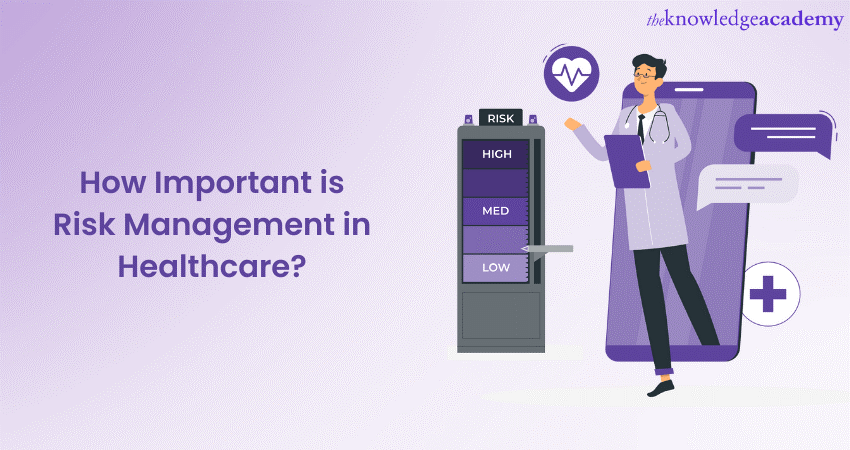Addressing the Unseen Risks: The Importance of Risk Management in Tech
Addressing the Unseen Risks: The Importance of Risk Management in Tech
Blog Article
Checking out the Significance of Risk Management for Effective Decision-Making Approaches
In the complex world of service, Risk Management becomes a critical aspect in the decision-making process. The ability to determine potential hazards and possibilities, and plan appropriately, can lead to the distinction between success and failure. With devices such as SWOT and PESTEL, companies are geared up to make educated options, cultivating strength and adaptability in an ever-changing environment. Wondering how this works? Let's unbox the dynamics even more.
Recognizing the Idea of Risk Management
Risk Management, a critical part in decision-making, is typically misunderstood or oversimplified. Risk Management involves regimented and structured methods, utilizing information and informative evaluations. From economic unpredictabilities, lawful obligations, calculated Management errors, to accidents and natural disasters, it addresses different dangers - importance of risk management.
The Role of Risk Management in Decision-Making Processes
In the realm of critical preparation and business procedures, Risk Management plays an indispensable role in decision-making processes. It helps in determining potential dangers and uncertainties that can affect the achievement of organization goals. By mapping these dangers, firms can create techniques to alleviate their effect, making certain service connection and stability. Risk Management hence becomes a crucial device in decision-making, aiding leaders to make enlightened choices based on a detailed understanding of the threats involved. It encourages a proactive method, allowing companies to prepare and anticipate for possible future circumstances. This significantly minimizes the likelihood of adverse effects, advertising a lot more effective and effective decision-making strategies. Therefore, Risk Management functions as a crucial part in the decision-making procedures of any organization.

Exactly How Risk Management Improves Strategic Planning
In the context of tactical planning, Risk Management plays a critical role. Initiating with the recognition of potential threats, it additionally includes the application of Risk reduction steps. The role of Risk Management is dynamic but not static, as it demands constant surveillance and adjusting of techniques.
Identifying Prospective Risks

Applying Risk Reduction
Having developed the value of identifying possible dangers, the following action is to discover Risk reduction. This procedure includes creating and executing techniques to handle recognized dangers efficiently. It is an essential element of calculated preparation as it boosts decision-making by reducing prospective unfavorable results. Risk reduction strategies can range from Risk avoidance, Risk transfer, to take the chance of decrease. Each approach ought to be tailored to the details Risk, considering its potential influence and the organization's Risk resistance. Effective Risk mitigation requires a deep understanding of the Risk landscape and the prospective impact of each Risk. This understanding enables organizations to focus on dangers and designate resources successfully, making sure that one of the most considerable dangers are attended to initially.
Monitoring and Changing Strategies
Though Risk mitigation is an important action in calculated preparation, constant surveillance and adjustment of these methods is equally crucial. This ongoing procedure allows organizations to identify new threats and reassess existing ones, making sure the executed approaches continue to be efficient in the ever-changing business environment. It also provides a chance to evaluate the success of the Risk advice Management actions, enabling modifications to be made where essential, further boosting calculated planning. Reliable monitoring and modification require using analytics and key recommended you read efficiency indications (KPIs) to measure performance. These devices supply useful data-driven insights that can inform strategic decision-making. Tracking and readjusting Risk Management techniques is a crucial part for enhancing an organization's durability and tactical planning.
Case Studies: Effective Risk Management and Decision-Making
In the world of organization and financing, effective Risk Management and decision-making often serve as the columns of thriving ventures. These situations highlight the worth of astute Risk Management in decision-making processes. These cases underscore the important role of Risk Management in strategic decision-making.
Devices and Techniques for Efficient Risk Management
These tools, such as Risk signs up and warmth maps, help in recognizing and assessing potential threats. Risk feedback approaches, a vital element of Risk Management, include approving, preventing, transferring, or mitigating risks. With these strategies and devices, decision-makers can browse the complex landscape of Risk Management, consequently promoting educated and efficient decision-making.
Future Trends in Risk Management and Decision-Making Methods
As we check out the large landscape of Risk Management, it ends up being apparent that the tools and strategies used today will certainly remain to develop. Future trends aim in the direction of a raised reliance on technology, with expert system and maker knowing playing significant duties. These innovations will make it possible for companies to predict possible dangers with greater precision and make even more informed choices. In addition, there will be a growing emphasis on strength, not simply in managing risks yet additionally in jumping back from unfavorable situations. Last but not least, the concept why not look here of Risk society, where every participant of an organization is aware and associated with Risk Management, will certainly obtain extra prestige. These fads declare a more inclusive and aggressive technique towards Risk Management and decision-making.
Final thought

Risk Management thus becomes an important tool in decision-making, helping leaders to make informed options based on a comprehensive understanding of the risks included. Risk mitigation strategies can vary from Risk avoidance, Risk transfer, to risk decrease (importance of risk management). Reliable Risk reduction requires a deep understanding of the Risk landscape and the prospective impact of each Risk. Risk reaction strategies, a crucial part of Risk Management, entail accepting, staying clear of, transferring, or mitigating threats. The principle of Risk culture, where every member of an organization is conscious and entailed in Risk Management, will certainly obtain a lot more prominence
Report this page